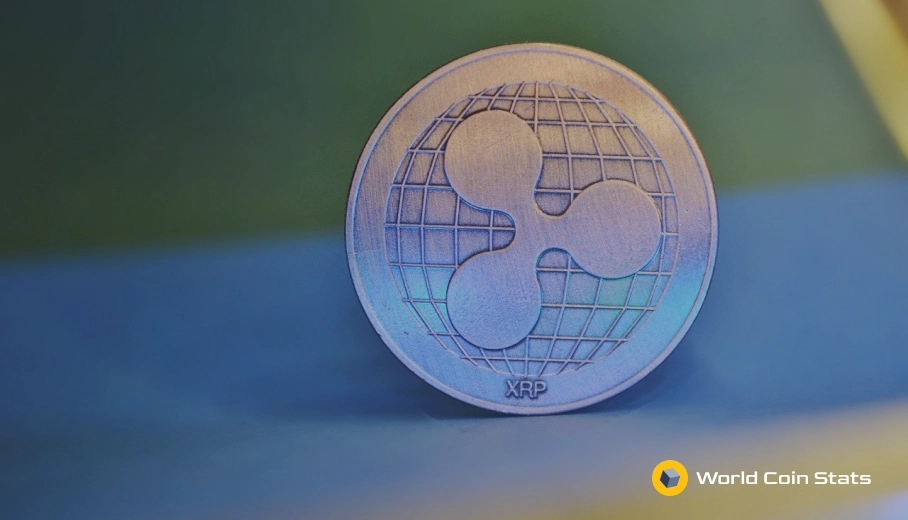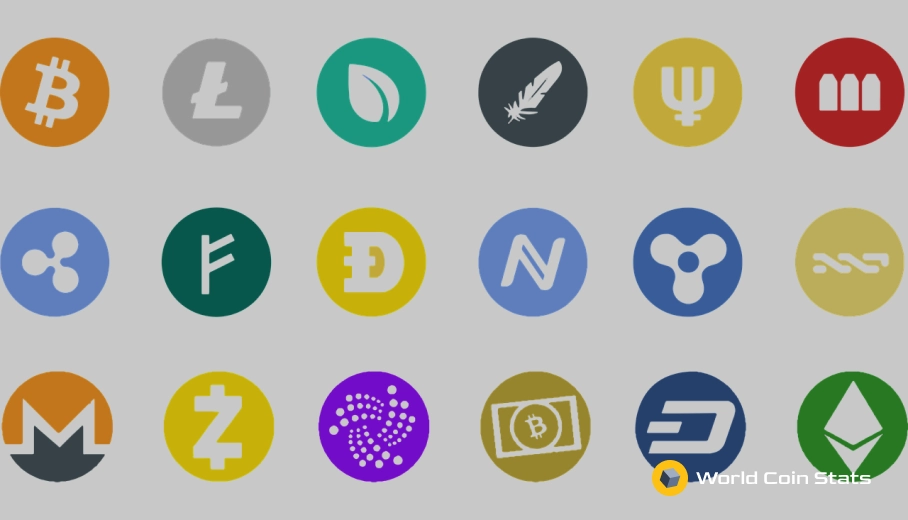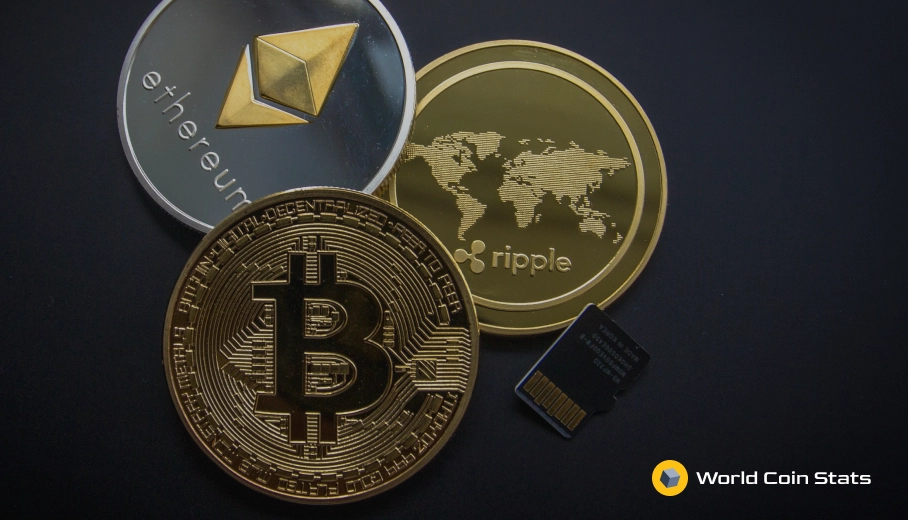Ripple (XRP) vs Stellar (XLM)
Note: The networks are called Ripple and Stellar. The coins are called Stellar Lumens (XLM) and XRP (XRP). This article will refer to the coins as Ripple and Stellar because that is what they are most frequently referred to as in the cryptocurrency community.
Ripple and Stellar are two very popular cryptocurrencies. And they are frequently compared because they have the same general purpose – facilitate transactions across borders.
However, they do have a lot of differences. They are not at all the same cryptocurrency. In fact, they have many differences outside of the main purpose of facilitating transactions across borders.
A Brief History of Ripple and Stellar
To fully understand the differences between Ripple and Stellar, it’s important to know the history of each coin. This section won’t go into too much detail about the histories of the two coins, but we will do a basic overview.
Both Ripple and Stellar were created by the same person – Jed McCaleb. Does that name sound familiar?
That is the same man that founded Mt. Gox. Mt. Gox was the largest cryptocurrency up until it was hacked and lost $450 million of customer funds.
That was also the hack that caused the fork of Ethereum.
Don’t worry, Jed McCaleb only founded Mt. Gox. He had nothing to do with running at the time of the hack.
Anyway, McCaleb founded Ripple after he sold Mt. Gox. A disagreement between him and the Ripple team caused him to leave Ripple in 2014. He then started Stellar in 2014.
The fact that both coins were founded by the same person, Jed McCaleb, explains why both cryptocurrencies have a very similar goal.
Ripple vs Stellar – Target Users
The biggest difference between Ripple and Stellar is the target demographic of the cryptocurrencies.
In a nutshell, Ripple targets banks while Stellar is aimed at the nearly 2 billion people worldwide that do not have a bank account.
Those are completely different goals, but each have a huge potential upside.
Contrary to popular belief, banks have to deal with a large amount of fees when transferring funds across borders. And banks transfer a lot of funds across borders every year.
The estimates vary from hundreds of billions to trillions of dollars every year of funds that banks transfer across borders every year. That applies to banks transferring funds between banks and bank customers transferring funds from one bank to another.
If Ripple can cut into just a tiny bit of those transfers, then they could have a multi-billion dollar cryptocurrency. Ripple would also collect a large amount of fees.
Stellar is a little different because the aim of the project is to provide banking services to those that don’t have a bank account. In the western world, most people have a bank account.
However, there are nearly 2 billion people worldwide that do not have a bank account. This locks them out of financial services like affordable money transfers, checking accounts, saving accounts, credit lines, and even loans.
The goal with Stellar is to provide all those services to those without a bank account without forcing them to get a standard bank account. The fees on Stellar are also much lower than a standard bank account.
It would be particularly useful for those that live abroad to send money to their home country. And it would allow those without a bank account a safe place to store their hard earned money.
Our favorite feature of Stellar, though, is that it allows one to quickly and cheaply exchange foreign currencies. If you have ever tried to do that with your own bank account, then you know that it’s either impossible or difficult, expensive, and takes a long time.
Ripple vs Stellar – Extra Features

Ripple and Stellar both offer fast transfers across borders with minimal fees.
The difference is that Stellar has a few extra features that Ripple does not have on its network.
First, Stellar has smart contracts programmable into the coin itself. This is extremely convenient for transactional purposes. On top of that, the smart contracts are actually easy to program compared to other smart contracts.
Next, Stellar allows users to exchange their coins for other currencies on the network. Again, this just adds more convenience to the coin and makes it an all-in-one coin compared to Ripple.
Finally, Stellar allows users to build their own cryptocurrency on the platform and launch an ICO from it. It’s quite similar to Ethereum in that regard.
And we all know that Ethereum took off in price in 2017 due mostly to the fact that so many cryptocurrencies were being launched on the network.
The same thing could happen to Stellar.
Due to those three reasons, we give the upper hand to Stellar in this category. It’s simply a much more functional cryptocurrency than Ripple.
Ripple vs Stellar – Level of Decentralization
The amount of decentralization of a cryptocurrency is a very important factor to consider about them.
Ripple and Stellar are both fairly decentralized currencies. However, Ripple has slightly more centralization than Stellar for two reasons.
- Only institutional holders can participate in consensus (mining).
- The wallet of Jed McCaleb was locked when he left the company.
Both those points go against the core principle of cryptocurrency – decentralization. And are two problems that cryptocurrency is attempting to solve.
Due to that, Stellar wins when it comes to the amount of decentralization of the network.
Ripple vs Stellar – Inflation
Inflation is a topic not discussed enough when it comes to cryptocurrency. It is very important to know, though.
The amount of inflation impacts the price more than anything else.
We like that Ripple has a fixed supply of XRP. XRP not only has a fixed supply – it has an amount that decreases every year because Ripple has decided to burn all transaction fees.
This means that the price of Ripple should go up overtime because less supply is on the market.
Stellar is a little different – the supply of XLM increases 1% every year. This means that the demand must increase by more than 1% each year for the price to increase.
In that way, Stellar is no different than fiat currency.
Stellar loses when it comes to its policy regarding inflation. Ripple’s diminishing supply means that the price must increase if the demand increases.
Ripple vs Stellar – Management Team
Ripple and Stellar both have excellent management teams. Stellar has Jed McCaleb – the founder of this type of cryptocurrency as CEO.
That gives them some advantages.
However, Ripple has more members of their management team that have prior experience in the corporate world, which gives them a big advantage when it comes to integrating with the traditional finance world. Ripple also has significantly more employees and offices on every continent.
As far as teams go, we give the edge to Ripple in this case. But it’s a very slight edge because both cryptocurrencies have excellent management teams.
Ripple vs Stellar – Decentralization of Tokens
Decentralization of tokens is a very important facet of a cryptocurrency. No one likes to see a cryptocurrency that controls a majority of its available cryptocurrency.
It’s just a bad look for a cryptocurrency. That much control means that the company could dump the cryptocurrency and crash the price.
Neither Ripple nor Stellar do a great job at decentralizing the tokens. Ripple controls about 59% of the available coins – a majority of the available tokens.
Stellar does much better by controlling approximately 30% of the available XLM, which still isn’t great. But 30% is much better than 59%.
The winner for least decentralized tokens is clearly Stellar.
Ripple vs Stellar – Market Cap
Ripple has a significantly larger market cap of over $10 billion. It’s actually the fourth largest cryptocurrency by market cap.
That is an important statistic for the present moment, but it doesn’t mean much for the medium or long term future of a cryptocurrency.
For comparison, Stellar has a market of just over $1.0 billion, which makes it the 17th largest cryptocurrency by market cap.
That isn’t particularly great – it’s surpassed by quite a few cryptocurrencies that we view as inferior like Tether.
With that in mind, market cap isn’t the most important metric for determining the current success of a coin.
Ripple vs Stellar – Which is a better investment?
Ripple and Stellar both have their strong points and weak points. Ripple has a much better inflationary policy than Stellar.
On the other hand, Stellar offers more functionality and catering to individuals seems more profitable than catering to banks.
As for disadvantages of each, we don’t like that Stellar has 1% inflation per year – that makes it a little too close to fiat for our liking. But we also don’t like that Ripple only allows institutions to participate in consensus and has too much centralization. Again, just like a fiat currency or traditional bank.
That said, we still like Ripple as a better investment because of the delationary token policy of the network.
However, you can’t go wrong with either cryptocurrency. And we recommend investing in both to hedge your bets because they are both great cryptos.
Can Ripple and Stellar co-exist?
It’s possible because the networks are aimed at completely different users than each other. Just think of Microsoft and Apple or iOS and Android.
This is especially true if blockchain finance really takes off. There will be so much demand that it’s almost certain that more than one of these cryptocurrencies will be on the market.
Which is more likely to succeed – Ripple or Stellar?
We give the edge to Ripple (XRP) for success. They have a better team and more backing by large corporations.
It just seems more probable a large corporation would go with a cryptocurrency that allows them more control than a decentralized cryptocurrency such as Stellar.
Plus, Ripple has a deflationary policy.
For those two reasons, we believe that Ripple is the better cryptocurrency from a financial perspective. But we prefer Stellar when looking at it from a functionality and use perspective.
Final Thoughts
Well, that covers it for the differences between Ripple and Stellar. These coins are not nearly as different as they might appear, but they do have some rather significant differences.
The biggest differences are in the inflationary vs deflationary policies of the two and the decentralization of the currencies.
As mentioned earlier, we give the edge to Ripple when it comes to a long term investment. But Stellar is likely here to stay – it will just remain smaller than Ripple for the foreseeable future.




